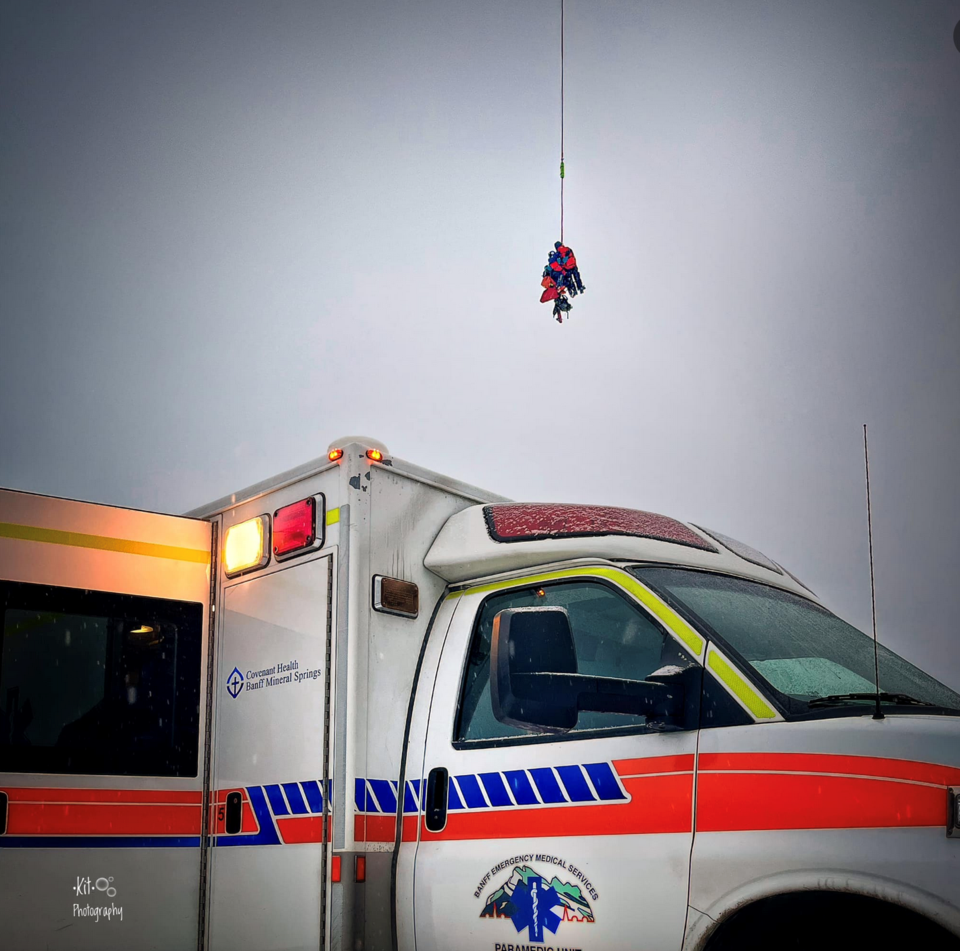LAKE LOUISE – One skier had a lucky escape after being swept 80 metres in a minor avalanche, while another skier hit a tree and was taken to hospital with head and chest injuries.
The incidents happened on Saturday (Jan. 6) at about 3:30 p.m. at Wolverine Ridge, just outside the Lake Louise ski area boundary, though initial reports to Parks Canada rescuers were somewhat unclear.
After receiving an alert from a satellite emergency notification device, two visitor safety experts were flown by helicopter to the scene, but while en-route learned the activated satellite device was moving towards the ski area boundary.
“Despite this, the helicopter proceeded to the original activation and located an injured 46-year-old male accompanied by another member of the party,” said James
Eastham, a spokesperson for Parks Canada in an email.
“The injured party had hit a tree and sustained head and chest injuries. They were transferred to ambulance at the base of the ski area.”
Earlier, the party had triggered a small avalanche.
Eastman said one of the skiers was carried 80m, but luckily escaped with very minor injuries and did not need rescuing by Parks Canada.
After the avalanche, most of the skiing party descended to help the skier who was swept away, while one member remained at the top to help a weaker skier, said Eastham.
When the were both signalled to come down, Eastham said one hit a tree.
"Their skiing partners found them after traversing back when they failed to arrive at the bottom of the slope,” he said.
This incident highlights the importance of knowing how satellite emergency notification devices work when used in emergencies.
Eastham said make sure satellite emergency notification devices stay with the injured person, even if it is not their device.
“You should anticipate that the rescue agency will be trying to contact you for further information,” he said.
“Monitor your device frequently. It’s especially important when daylight hours are limited.”
In this case, Eastham said rescuers were confused by the device’s movement and unsure whether there had been a false activation and what position they should fly to.
“Given the limited daylight hours this time of year, even a small delay could result in spending the night in the backcountry,” he said.




